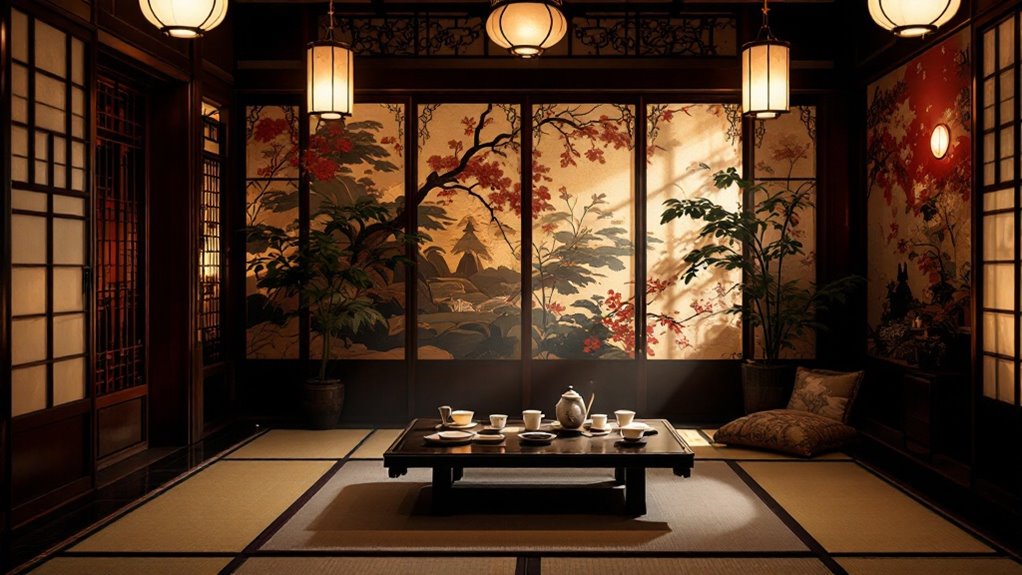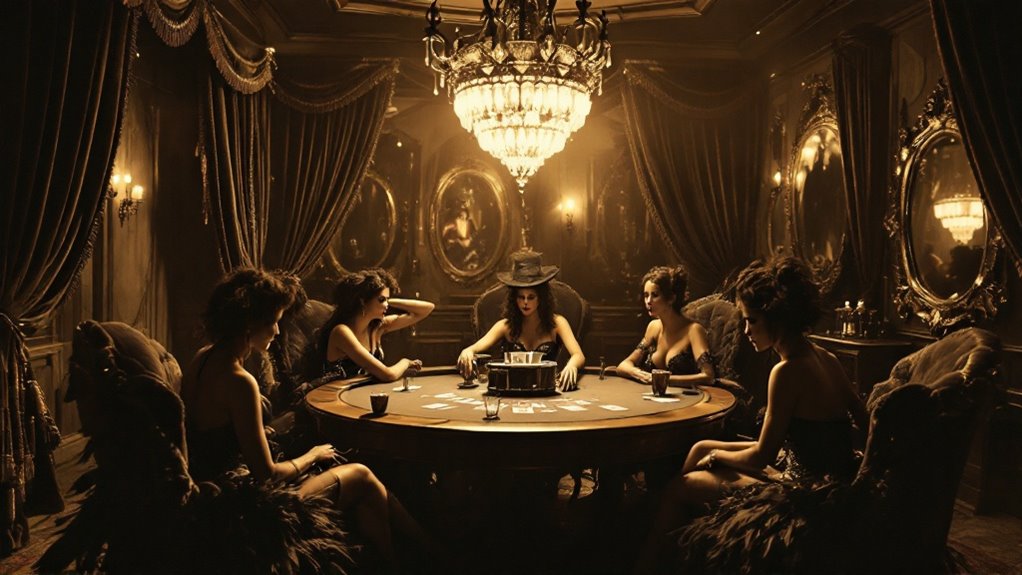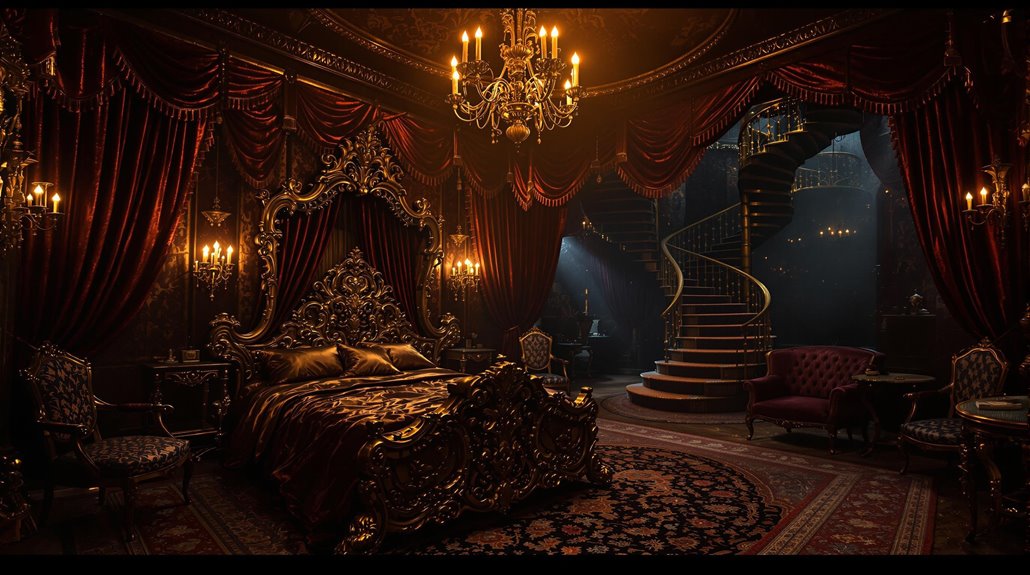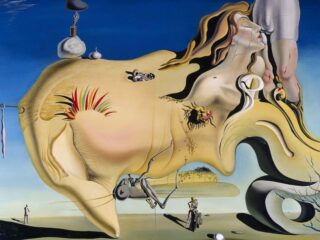Did you know that during the 19th century, Paris had over 200 floating brothels drifting along the Seine River? While you explore the peculiar history of brothels, you’ll find that these establishments were not just about clandestine activities but also served as cultural hotspots.
Out of the opulent flower houses of Shanghai to the underground dungeons of Victorian London, each venue had its own unique allure and societal impact. What drove the creation of these unusual spaces, and how did they shape the societies around them? Let’s uncover the secrets hidden within these intriguing locations.
The Floating Brothels of Paris
In the heart of 19th-century Paris, a unique form of entertainment emerged on the Seine River: the floating brothels. Here is the picture: a lively city pulsing with life, where the Seine isn’t just a river but a stage for riverine romance and adventure. These floating brothels, like magical vessels of vice, offered a tantalizing escape away from the everyday. When you step aboard, you’re enveloped by an atmosphere that whispers secrets of love and intrigue.
These boats weren’t just about romance; they were floating casinos, too. Conceive the thrill as you try your luck at the card tables under the gentle sway of the boat. The laughter and music mix with the river’s sounds, creating an intoxicating symphony. You might find yourself swept up in the excitement, forgetting the world onshore.
The floating brothels of Paris were havens of fantasy and forbidden fun. They painted a colorful depiction of a city that thrived on mystery and allure. So, next time you think of Paris, remember not just the Eiffel Tower, but also the intriguing dance of the floating brothels on the Seine.
Victorian London’s Secret Subterranean
While Paris had its floating escapades, Victorian London kept its secrets buried beneath the lively thoroughfares. Here is someone wandering through the fog-laden streets of 19th-century London, where gas lamps flicker, and horse-drawn carriages clatter over cobblestones. Beneath your feet, hidden from the hustle and bustle, lies a world of underground pleasures—a network of clandestine brothels tucked away from prying eyes.
These subterranean establishments were the epitome of Victorian secrets. They catered to the city’s elite, offering a discreet escape from the rigid moral codes of the time. Picture elegantly furnished chambers lit by candlelight, where patrons indulged in forbidden desires. The entrance, often concealed behind unassuming shopfronts or through maze-like alleys, required a secret password or a trusted guide to gain access.
Inside, one would find an atmosphere that was both opulent and mysterious. The air might carry a hint of perfume mingled with the faint whisper of laughter, creating an ambiance that was both inviting and illicit. Victorian London’s underground brothels were sanctuaries for those seeking to lose themselves in hidden fantasies, just beneath the city’s surface.
The Geisha Houses of Japan

Enter the enchanting world of the Geisha Houses of Japan, where tradition and artistry intertwine in a delicate dance. Here, you’ll find a unique domain where geisha culture flourishes, offering a glimpse into the past through its traditional arts. These houses, known as okiya, are not what you might consider typical brothels. Instead, they’re sophisticated establishments where geishas entertain guests with their mastery of music, dance, and conversation.
In these elegant homes, every detail whispers stories of ancient customs. The geishas, adorned in lively kimonos, glide gracefully across tatami mats, their every movement a demonstration of years of dedicated training. It’s like watching a living painting, each gesture perfectly choreographed to enthrall and enchant.
Geisha culture is rich with history and tradition. You might be surprised to learn that geishas weren’t always women; in the early days, men often filled these roles. But over time, women took over, bringing a feminine grace to the art form. As you dive into this world, you can’t help but feel a profound appreciation for the intricate fabric of skills and traditions that define these enchanting artists.
Ancient Pompeii’s Lupanar
Now, let’s step back in time to the lively avenues of Ancient Pompeii where the infamous Lupanar, the city’s most well-known brothel, stands as a tribute to a colorful yet shadowy part of Roman life. Envision walking through these vibrant thoroughfares and stumbling upon this two-story establishment, a reflection of the bawdy side of Roman society.
The Lupanar, meaning “wolf den,” wasn’t just a place of business; it was an integral piece of the social fabric, where people from all walks of life converged, letting the boundaries of class and status blur, if only for a fleeting moment.
Inside, the walls are adorned with vivid erotic art, a gallery of sorts, displaying intimate scenes that leave little to the creativity. These frescoes weren’t just for decoration; they served as a menu of services, guiding patrons in their choices. Now, you might wonder if the ancient Romans had Yelp reviews. Well, not quite, but they did leave graffiti, some of it raving, others a bit more, shall we say, candid.
The Wild West’s Soiled Doves

During the rugged days of the American Wild West, brothels were as much a staple as the saloons and dusty streets. You’d find “soiled doves” situated in nearly every town, providing companionship and respite away from the harsh frontier life.
In this untamed land, where tumbleweeds rolled and gunfights erupted, these establishments thrived alongside the saloons. Understanding saloon etiquette was essential, as it wasn’t just about ordering whiskey; it was about knowing how to navigate the world of poker, piano tunes, and those infamous swinging doors.
Picture it: cowboys swaggering in after weeks on the trail, seeking the warmth of a woman’s company. The soiled doves, with their lively dresses and painted lips, offered more than just physical comfort; they provided a slice of civilization in an otherwise lawless existence. Frontier life was unpredictable and unforgiving, and these women, often misunderstood, played a significant role in the social fabric.
It’s amusing to think how, amidst the chaos of cattle drives and gold rushes, these brothels operated with a certain flair. They were, in their own way, the heartbeats of booming towns, where stories were swapped, and laughter echoed through the night.
Shanghai’s Opulent Flower Houses
While the Wild West brothels were rugged and raw, halfway across the world, Shanghai’s opulent flower houses exuded sophistication and elegance. Think of a domain where luxury clientele mingled under lantern-lit ceilings, surrounded by intricately carved wooden panels and plush silk draperies.
These establishments were cultural hubs, places where art, poetry, and music thrived. The client was sipping fine tea as one listened to the enchanting melodies of the pipa and engaged in intellectual discussions with scholars and artists.
The flower houses, known as “huafang,” held immense cultural significance in Shanghai’s social fabric. They were more than venues for fleeting encounters; they were centers of influence where socialites and dignitaries gathered. One might chuckle at the image of a stern bureaucrat relaxing in such a lively setting, but it was common back then. These houses operated within a structured hierarchy, each catering to different levels of society. The most exclusive ones promised discretion and elegance, attracting the city’s elite.
As one strolls through these historical anecdotes, one realizes that Shanghai’s flower houses were genuinely unique, blending indulgence with culture, creating a legacy that’s hard to forget.
Wrapping up
You’ve traveled through time, starting with the floating palaces of Paris to the secretive underground of Victorian London. Envision the lively geisha houses of Japan, where art met allure, and the spirited frescoes of Pompeii’s Lupanar, whispering ancient secrets. Picture the Wild West’s rugged soiled doves and Shanghai’s flower houses, where intellect bloomed alongside desire. These brothels weren’t just about indulgence; they were colorful tapestries of culture and history, weaving together stories that still fascinate us today.




